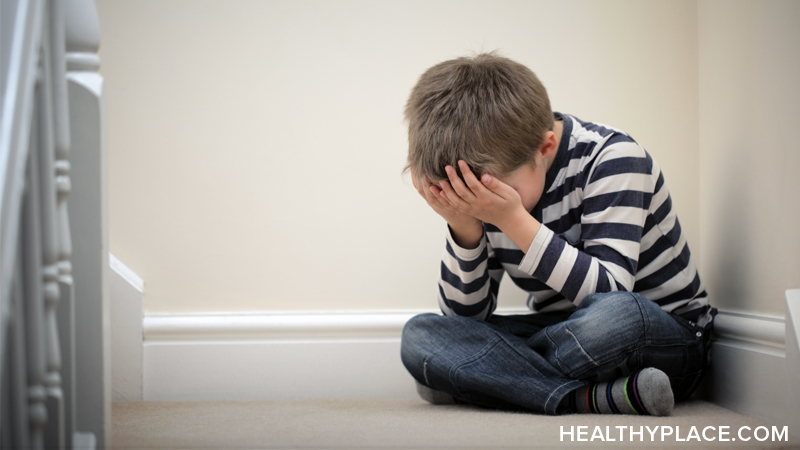PTSD in Children: Symptoms, Causes, Effects, Treatments

Posttraumatic stress disorder (PTSD) can occur in children; it’s not just for adults. PTSD is a trauma- and stressor-related disorder that people of any age can develop in response to living through a traumatic event.
Causes of PTSD in Children
A child can develop PTSD after experiencing a traumatic event, witnessing a traumatic event, or learning that a primary caregiver has been killed. Children are especially vulnerable to these causes of PTSD:
- Watching a parent get killed
- Witnessing a sexual assault
- Experiencing sexual abuse
- Seeing a school shooting
- Witnessing violence in an area close to their home
PTSD in Children: Warning Signs and Symptoms
All children have emotional and behavioral reactions to a traumatic event, and at times these reactions can be quite strong. Experiencing such things as fear, loss of interest in activities, emotional upheaval, difficulty concentrating and paying attention is a normal human reaction to trauma.
A child who experiences these after a traumatic event doesn’t necessarily have PTSD.
PTSD in children involves telltale warning signs and symptoms that aren’t seen in typical stress responses. If you are in the life of a child who has experienced or witnessed a traumatic event, watch for the following warning signs and symptoms of PTSD:
- Intrusion symptoms (unwanted memories, thoughts, dreams)
- Avoidance and withdrawal
- Arousal (anger, sleep problems)
- Changes in school performance
- Numbing/flatness
PTSD in Very Young Children
Because of their developmental stage, very young children respond slightly differently to trauma than do older kids and adults.
Like older children and adults, children under the age of six can experience intrusion symptoms, which involve recurrent distressing memories of the event and/or nightmares. The intrusion symptoms of PTSD in very young children, however, aren’t always obvious. The content of dreams isn’t clearly connected to the traumatic event, and memories, which typically come through in play, don’t always look distressing to observers.
Older children and adults must experience both avoidance and arousal symptoms in order to be diagnosed with PTSD, but very young children with PTSD need to have only one (although they can experience both).
PTSD avoidance symptoms in children under the age of six include:
- Withdrawing from people
- Avoiding conversations about the event
- Avoiding activities, places, or physical reminders of the traumatic event
- Restricted play and behavior
PTSD arousal symptoms in children under the age of six include:
- Irritability and angry outbursts
- Increased temper tantrums
- Exaggerated startle response (jumpiness)
- Sleep problems
- Difficulty concentrating
Other common effects of PTSD in young children:
- Developmental regression (losing progress in toilet habits, bed wetting, language usage, etc.)
- Unusual clinginess to caregivers
- Repetitive play that involves re-experiencing the trauma
- Preoccupation with aspects or reminders of the trauma
PTSD in School-Aged Children
Important features of PTSD in school-aged children are intrusive symptoms, avoidance symptoms, and behavior changes.
Intrusion symptoms of PTSD in children involve:
- Unwanted, persistent memories
- Nightmares, although children don’t typically remember the content
- Play; often repetitive, play is key for children with PTSD to act out, express, and deal with their trauma
Children with PTSD often display these avoidance symptoms:
- Withdrawal from others
- Appearing overly cautious and watchful
- No longer participating in activities formerly enjoyed
- Refusal to participate in new activities
- Reluctance to discuss the trauma; any discussion involves flat, factual accounts
The effects of PTSD in school-aged children can be seen in their behavior, such as:
- Disorganized or agitated behavior
- Sexual acting-out
- Aggression
- tantrums
The behavior of children with PTSD can be mistaken for the behavior problems associated with oppositional-defiant disorder or conduct disorder. Further, PTSD in children can damage the child’s relationship with parents and other caregiving adults, siblings, and peers.
PTSD in Children: Treatments
PTSD can have profound, negative effects on children of all ages. With patience, support, and help from a mental health professional, children can heal and overcome PTSD (How Long Does PTSD Last? Does PTSD Ever Go Away?). Exact PTSD treatment varies according to the individual child as well as the therapist, but there are common approaches that are effective for children with PTSD:
- Play therapy
- Memory processing
- Cognitive-behavioral therapy
- Relaxation techniques
- Stress management
- Coping skills development
PTSD in children can be temporary. Children of all ages can return to their previous, healthy level of functioning and continue to grow and develop as they were doing before the trauma.
APA Reference
Peterson, T.
(2021, December 29). PTSD in Children: Symptoms, Causes, Effects, Treatments, HealthyPlace. Retrieved
on 2024, November 20 from https://www.healthyplace.com/ptsd-and-stress-disorders/ptsd/ptsd-in-children-symptoms-causes-effects-treatments


